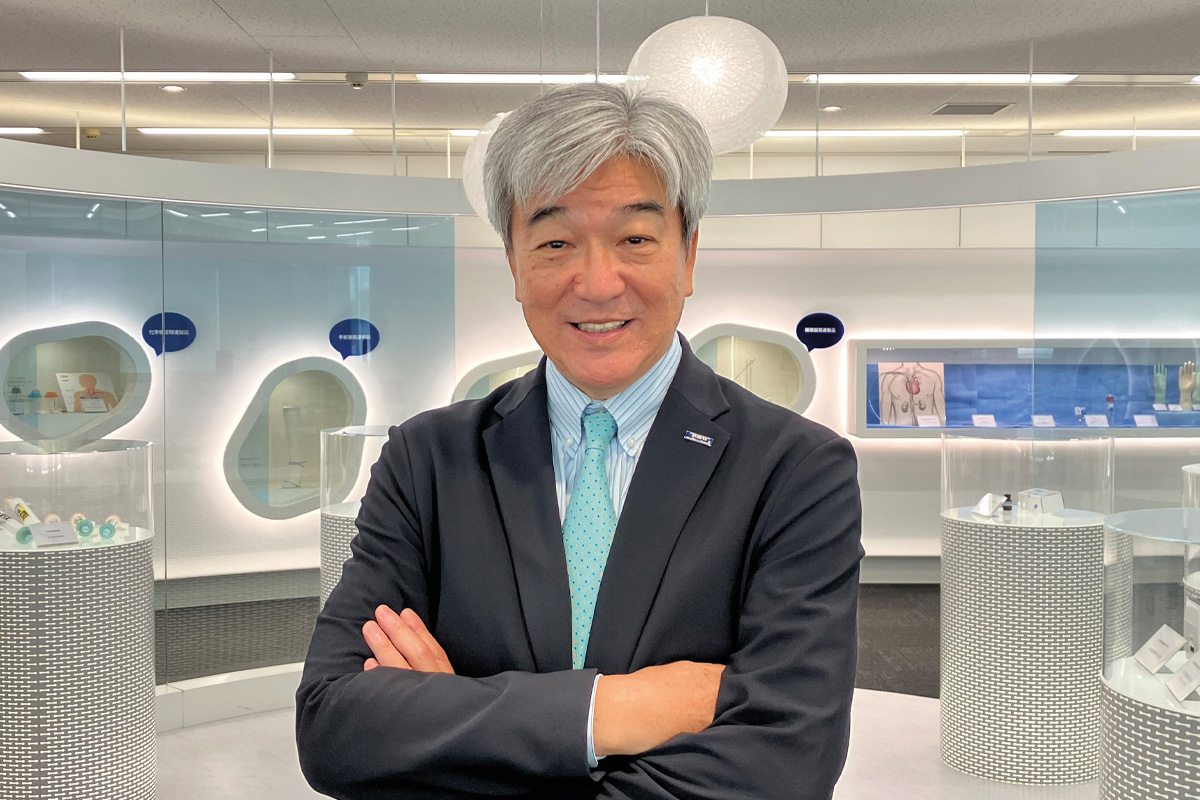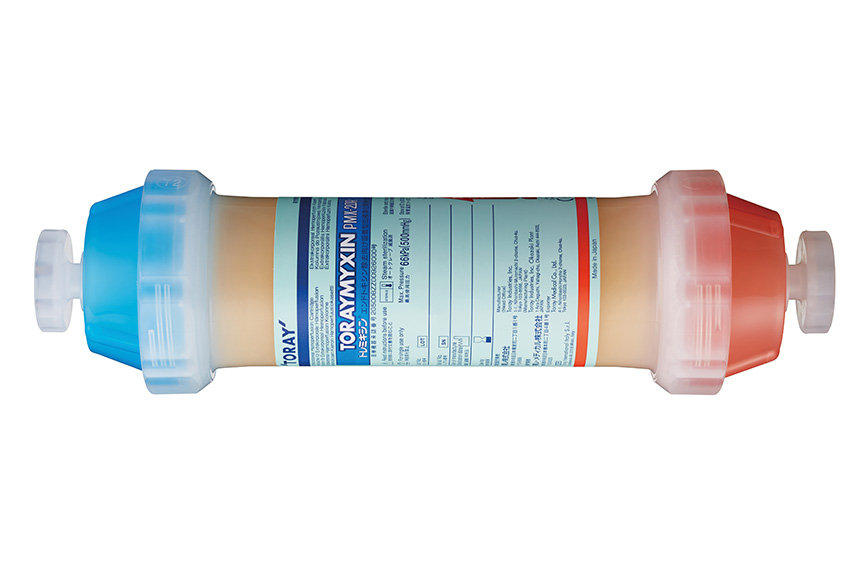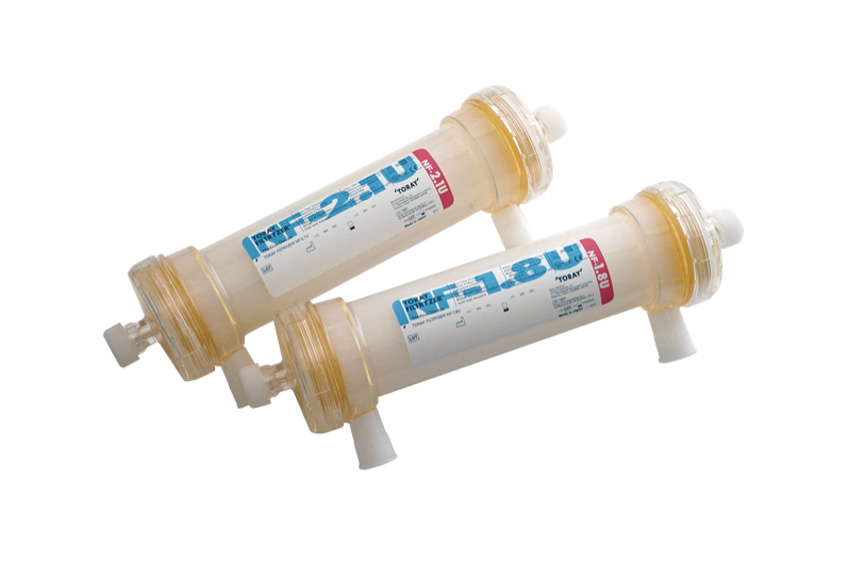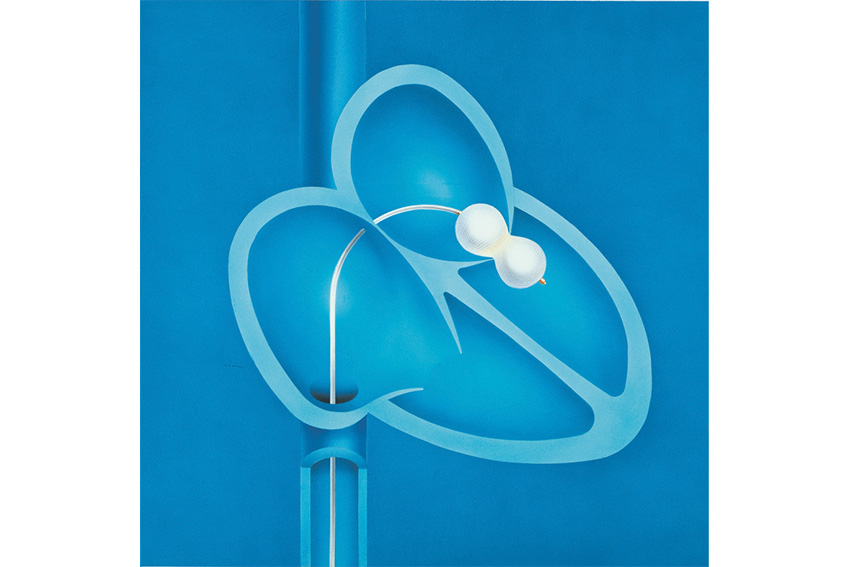Since its establishment in 1980, Toray Medical has been committed to offering high-quality medical devices, pharmaceutical products and services to patients, as part of its vision to bring the finest-quality and most advanced healthcare to the world.

From a macro perspective, Japan has a very aging population, which creates a lot of tension regarding social security expenses. One way of releasing this tension is to shift from treatment to prevention as well as exploit new technologies and big data held on patients. What role do you believe digital technologies will play in transforming the healthcare industry?
With digitalization what will be the biggest change will be the overcoming of the discrepancy that you find among doctors. Those doctors conventionally have treated patients based on their own experiences, but with the difference in knowledge and experience among doctors we find that there are discrepancies among the treatment that patients have received. By being able to utilize big data and AI, the medical industry will be able to provide more high-precision detection and treatment to patients, thus overcoming the discrepancies.
This high-precision and consistent medical treatment will not only be advantageous to patients but also to the government in terms of treatment costs being reduced. Additionally, lower-cost treatment can be done in a shorter period of time.
Japan has one of the world’s longest life expectancies and over 30% of the population is over the age of 65. One of the big challenges, especially after COVID-19, is the amount of hours doctors are expected to work. What challenges or opportunities does Japan’s unique demographic present for pharmaceutical and medical companies?
The average age of a dialysis patient is now about 70 years old, and on a yearly basis, this age is increasing. What this means is that patients are now more vulnerable to having joint symptoms that need to be taken care of by medical staff. There is now more of a burden on medical staff that are taking care of patients that require dialysis treatment. As a medical device manufacturer, we feel it is important to elevate the quality of life of patients as well as the medical staff by providing equipment with high technology. This could be through AI or other means. The ideal goal is to automate processes so that we can decrease the burden on medical staff and at the same time increase the treatment for patients.

Toraymyxin®
The implementation of digital technologies also poses a series of challenges. Medical and surgical practices are the longest post-graduate studies and it takes many years for people to become doctors or surgeons. Nevertheless, you have many experts who say that the current field of study doesn’t reflect technological advancements as we introduce more advanced technologies such as AI. In advanced economies like Japan and Europe keeping up with these advancements might be simple, but when you talk about developing nations it is not certain that people can use these new technologies. How is Toray Medical facing this challenge and what educational services do you provide to your clients so that they can use the latest technologies?
First of all, I should clarify that digitalization doesn’t make things more complicated, rather it actually makes things simpler. You mentioned receiving training on the latest technologies, but our focus is actually on developing this technology so that it doesn’t require extensive training to use. Take the iPhone as an example; the cell phones before it were complicated and hard to operate, whereas now almost anyone can operate an iPhone because of its simple design. This simple, universal technology is something we are aiming to introduce through digitalization.
At its core the Toray Group is a chemistry and functional material company; very famous for its production of carbon fiber reinforced polymers (CFRP) and other types of fibers. With this background in functional materials and chemistry, what would you say are the advantages you have when it comes to providing medical devices?
The Toray Group’s core technology is actually what we center our business around. The polymethylmethacrylate (PMMA) filter for the dialyzer uses Toray’s fiber science technology. Toray was established in 1926 as a manufacturer of rayon filament, but its core technology is polymer science. Filaments, films, and other applications have been developed through these core technologies. One of the important applications was in the medical field thus leading to dialyzers through filtration technology.
It isn’t just dialyzer filtration, but also water purification devices and monitoring devices. We provide holistic solutions to hospitals in the dialysis field. This water filtration uses reverse osmosis technology which Toray is number one in the way at and they can provide the purest water in any hospital. This is a uniqueness that we have when working alongside our group company.
One challenge with dialysis is the purity and cleanliness of the water. You recently launched the TW-EX reverse osmosis purified water manufacturing system which is very interesting. How does it overcome the challenges of purifying water compared to your previous products or series?
The upgraded version has a more up-to-date reverse osmosis technology that is able to convert 85% of the water source into purified water. Conventionally that rate has been around the 67% mark so our product has increased that conversion rate.
Another uniqueness is that we can customize the filtration according to the water source. The content of water might vary from hospital to hospital, so in order to achieve the purest water specific combinations of filters are needed.

Toray Filtryzer
Since your foundation, you have been a leading manufacturer of medical devices within three major divisions. Which product division do you believe has the most potential for future growth?
The three major businesses we have are our dialysis business, ICU-related solutions, and medical equipment. Generally speaking, it is believed that the dialysis field is not growing, however, we don’t see it as a dwindling market. Rather, in terms of the global market, dialysis is growing.
We have a unique technology with this filtration membrane that can contribute to PMMA, thus improving patients' quality of life through dialyzers. It is important for our firm to market its strengths so that we can increase our share in the market.
Japan is known to reinvest a lot into R&D; roughly 3% of the country’s GDP is reinvested every year. Toray has always been a pioneer with a lot of world-first technologies. What is your current focus for your R&D activities?
R&D investment is currently heavily focused on automation and the utilization of AI in our dialysis machines. This is done so that we can decrease the burden and lessen the involvement of humans when dialysis treatment is administered.
We saw in our research that you have expanded into the European Union. This market is one that has advanced technology already when it comes to blood purification. Why did you decide to target Europe as a specific area for growth? In a market that is already quite competitive, what do you think are the advantages that Toray Medical has identified?
We have been exporting our dialyzer filters, not the devices themselves. We actually have an extensive history of exports to Europe, and in fact, nothing has particularly changed in terms of our European strategy.
The reason why we picked Europe comes down to the fact that Europe has traditionally been the pioneering soil for the development and testing of new medical devices as well as treatments. In the US they have the FDA, and in Europe, they have the CE mark. We first go for the CE mark in Europe to test the waters before moving on to the FDA.

“Inoue-Balloon” Catheter
From our experience interviewing Japanese firms, we have found that partnerships and alliances are an effective way to penetrate new markets and gain more market share, especially outside of the domestic market. What role does collaboration or co-creation play in your business model, and are you looking for any new partners to help address markets such as Europe?
We already have some consolidated partnerships but we are always open to new partnerships in any form. It could be a partnership to develop a new device or it could be a new type of relationship with an existing partner. We are very open but we are not in a rush to find new partners rather we will consider options if opportunities present themselves. We are aware that when entering new markets it is important to partner with local companies. Not only does Toray Medical value partnerships but also the Toray Group as a whole.
What strategy is Toray Medical looking to employ to further grow internationally?
As far as our focus right now, more is concentrated on the domestic market rather than overseas. My mission as the president of the company is to globalize the company and increase our overseas market share. This could be done in the form of partnerships or M&As. As for the areas of focus, every region has its own needs so it could be Asia, China, Europe, or the US. Understanding the needs of each market and providing adequate is an important strategy.
Imagine that we come back on the very last day of your presidency and have this interview all over again. What goals or dreams do you hope to achieve by the time you are ready to pass the baton onto the next generation of Toray Medical executives?
What I keep telling my employees is that our clients are patients, and the mission of the company is to provide services and treatments to those patients. Society is currently undergoing a huge change and it is important for our company to take the lead in creating new services and increasing the quality of life of our patients. We want to be a proud company that has provided holistic solutions to each market making the lives of global citizens a more comfortable one.
0 COMMENTS